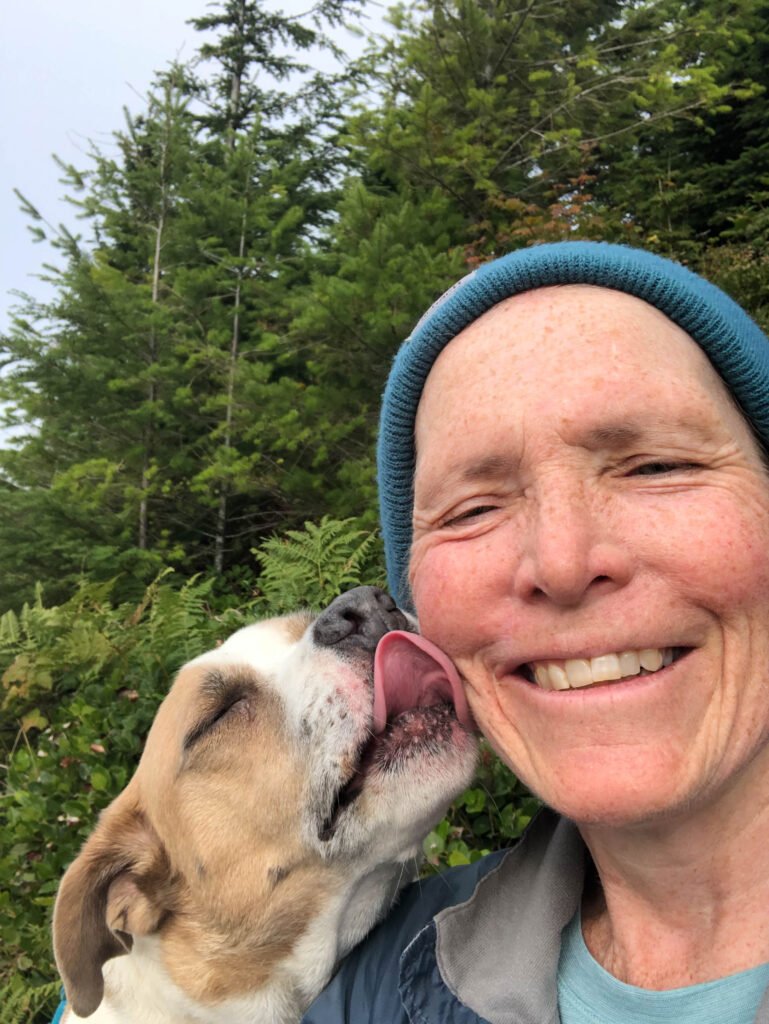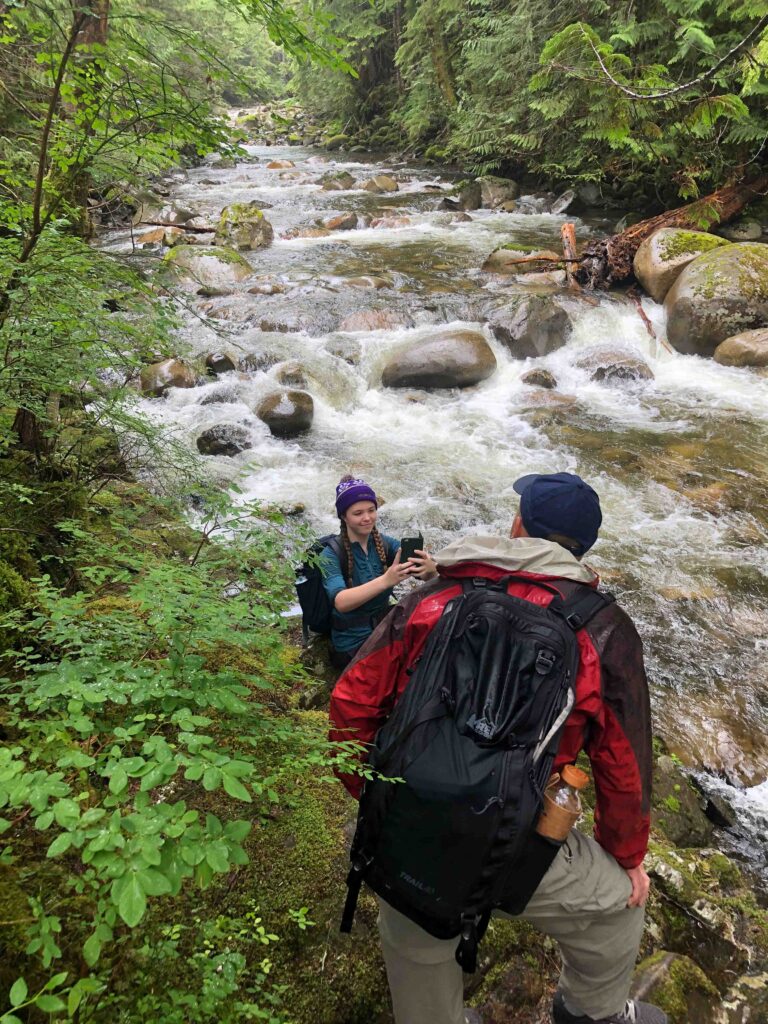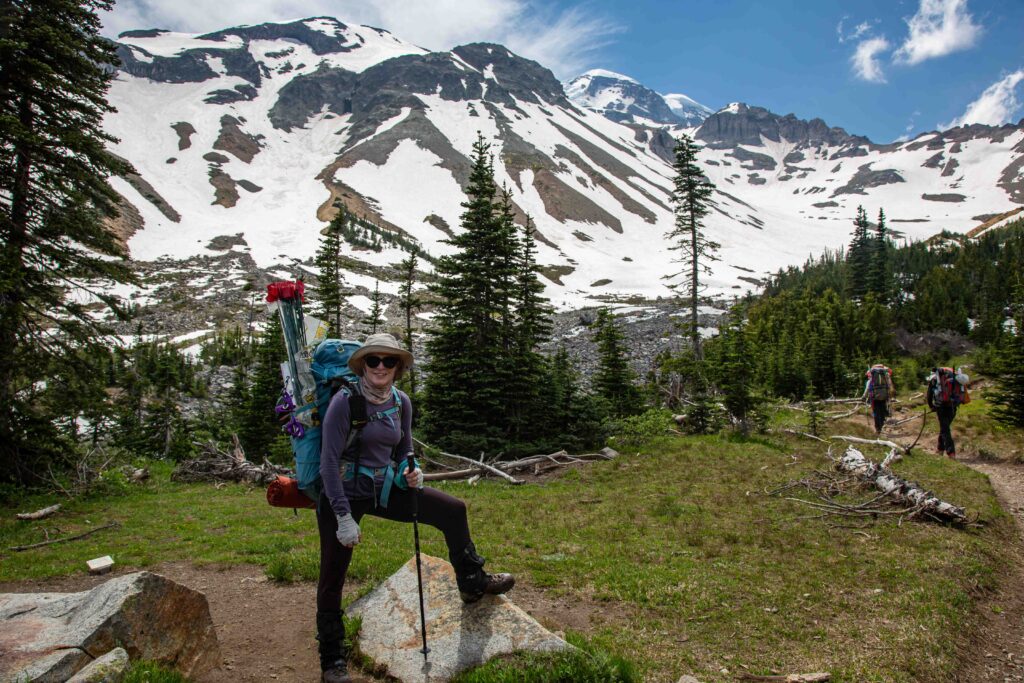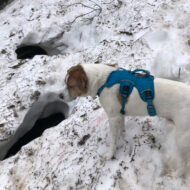Another shout-out goes to KJ for providing this week’s blog topic. He asked for advice on rest stops during hikes. Let’s take a closer look at the perfect pause: the skill — and art — of the hiking break.

When Is a Good Time for a Hiking Break?
The short answer to “When should I take a break?” is “Anytime it feels like you need one.” Here are some examples of when to insert a break into your hike.
- Physical Condition: Whenever you’re feeling exhausted, take a break. Keep track of your energy level, muscle fatigue, joint or tissue discomfort (think forming blisters), and hydration status. It’s far better to stop and take care of a small problem than continue indefinitely into it blossoms into an injury, crisis, or worse.
- Trail Difficulty: If you are traveling over steep inclines, rugged terrain (think bushwhacking), or extra long distances you may want to plan more frequent breaks than if you’re traveling on flat trails.
- Weather Conditions: On hot days, it’s crucial to take breaks to hydrate and prevent overheating. In cold or wet conditions, breaks provide a chance to warm up or change into dry clothing.
- Group Dynamics: If you hike with a group, be mindful of the needs and preferences of your fellow hikers. Some people may require more frequent breaks than others, so look for a balance that works for everyone. The exception to this is guides that require a certain climbing pace; check ahead of your climb to know what the pace expectations are and how many breaks you can expect.
- Time Constraints: If you have a specific goal, such as reaching a certain point or finishing the hike by a particular time, plan the number and length of your breaks accordingly to stay on track.

Types of Breaks
I know several people who prefer not to stop on the trail. They argue that taking breaks makes it harder to get going again. My breaks usually aren’t very long, especially when it’s just me and my dog. Here’s how I take breaks.
My general pattern is to hike for 15-20 minutes to set a good rhythm. Our first stop is usually a “clothing break” to remove a layer and get out my water bottle. Roughly every hour, I give my dog a biscuit and water, if he’s not drinking from streams, and at the two-hour mark, I give him a more substantial snack, usually part of an early lunch. He’s earned it by then!
Our breaks are usually only 3-5 minutes on the trail, perhaps 15-30 at our destination depending on the view and the weather. This summer my daughter and I spent several hours at various alpine lakes swimming. In those cases, the goal was to have a lake experience, rather than just a hike.

Why Take a Hiking Break?
The list of reasons for stopping includes:
- Rest and Recover: Give your muscles and joints a chance to recover from the physical exertion of hiking.
- Hydrate: Pause to drink water and stay properly hydrated, especially on hot days.
- First Aid: Attend to any minor injuries or hot spots (before they form blisters) with a first-aid kit.
- Adjust Gear: Make adjustments to your hiking gear or clothing for comfort and safety.
- Check the Map: Review your trail map or GPS to ensure you’re on the right path.
- Navigation: Plan your next steps and discuss your hiking route with your partners. This might also include exploring options for future hikes, scouting campsites, or evaluating extended rest spots.

What to Do During Breaks
And if you’re not a big fan of hiking breaks but you’re exploring with people who need more frequent rest stops than you do, here are some helpful suggestions for things you can do while you wait:
- Snack: Replenish energy levels with a healthy snack to keep your stamina up.
- Spot Wildlife: Keep an eye out for wildlife and take the time to observe and appreciate their presence.
- Shoot Photos: Capture scenic landscapes, tiny mushrooms or slugs, birds, and wildlife on camera. Open your eyes to the beauty around you.
- Stretch: Perform some gentle stretches to prevent muscle stiffness and improve flexibility.
- Social Interaction: If you hike with others, use break time to talk with your partners and ask good questions.
- Scenery: Take in the breathtaking views and appreciate the beauty of nature around you.

Where to Take a Hiking Break
You can take a break just about anywhere. Make sure to leave plenty of room for other people to get around you. Step to the side or completely off the trail so you do not block traffic. It’s also a good idea to plan your break where people can take “party separations” without being interrupted.
On sunny days, choose shady spots. On rocky trails, look for larger rocks that might provide a temporary seat. I like to look for logs without moss (on damp days moss can soak up a ton of moisture and leave your bottom wet!) or at the very least a pull-out where I have a place to set down my pack and get out a food or water bowl for my dog.


Ideally, we look for spots with views so we can get some nice photographs. Pick a place that is away from crowds, safe, and comfortable for everyone in your party. Consider what characteristics make up the ideal rest spot for you.
And it probably goes without saying — but I’ll say it anyway — in winter, never take a break while you’re crossing avalanche-prone slopes. Get to stable ground before you stop. Likewise, in high wind, avoid standing under widowmakers, or trees that are losing big branches. Always keep safety in mind.
How To Learn More
To expand your education on trail safety and mountain travel, a great organization I’ve been a member of for over thirty years is the Seattle Mountaineers. To read more about break time optimization, here is another point of view. Backpacking Light has a thread on their forum about rest periods when hiking. And Love the Backcountry has yet more advice. The main point is: you’re not in a race. Take breaks as needed and enjoy your experience. If you drive yourself into the ground, where’s the joy in that?

If you have a break tip you’d like to share, or a burning question you’d like me to answer this month, please submit it below. I love hearing from readers and I always look forward to requests.


Great article…if you train properly, break will be part of your training. Breaks are crucial for a great training & it helps the recovery. Decrease risk of injuries. Great habit to have.
Thanks for the comment, Silvie-Marie. How long are your breaks and how many do you try to take on a typical hike?